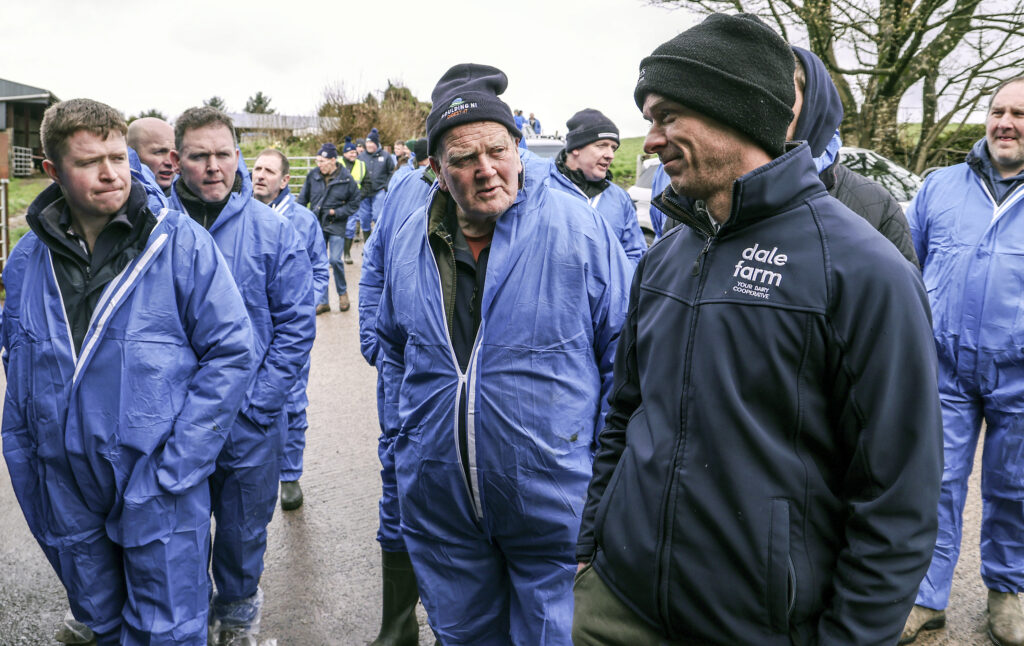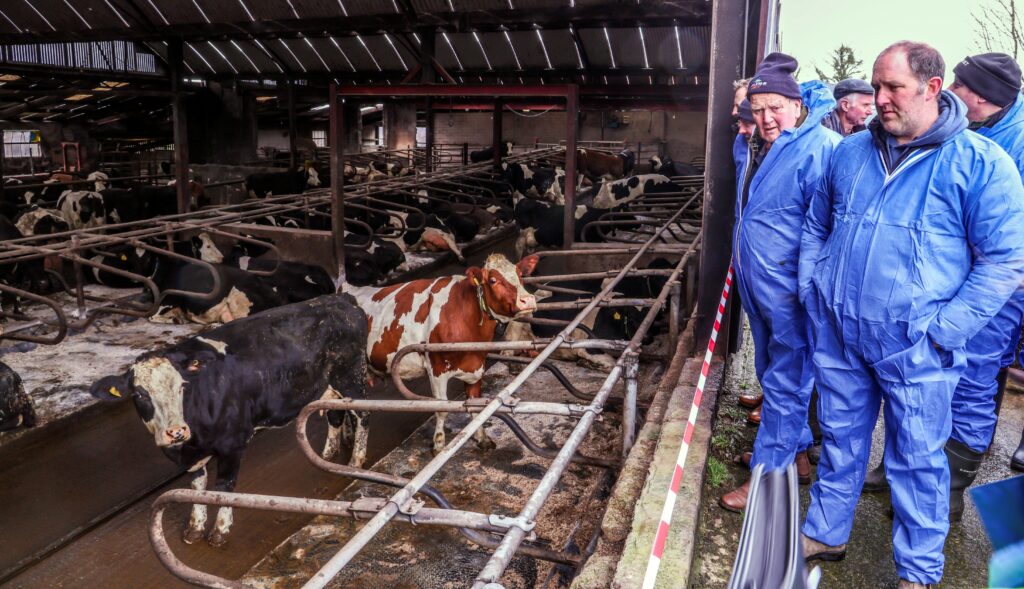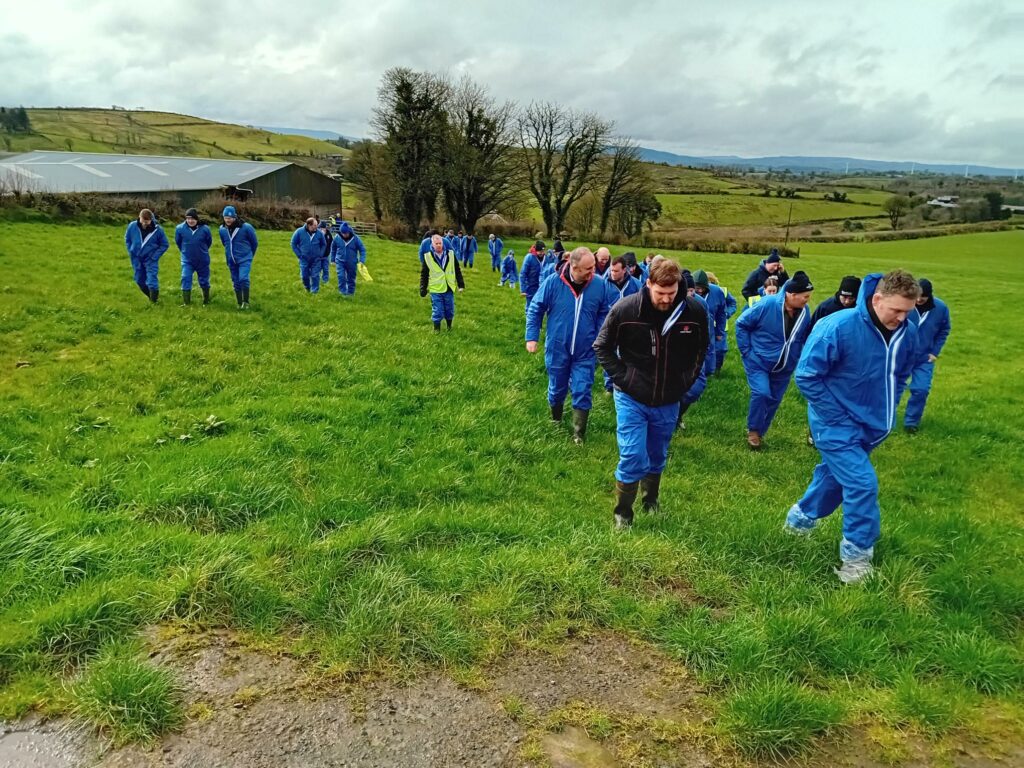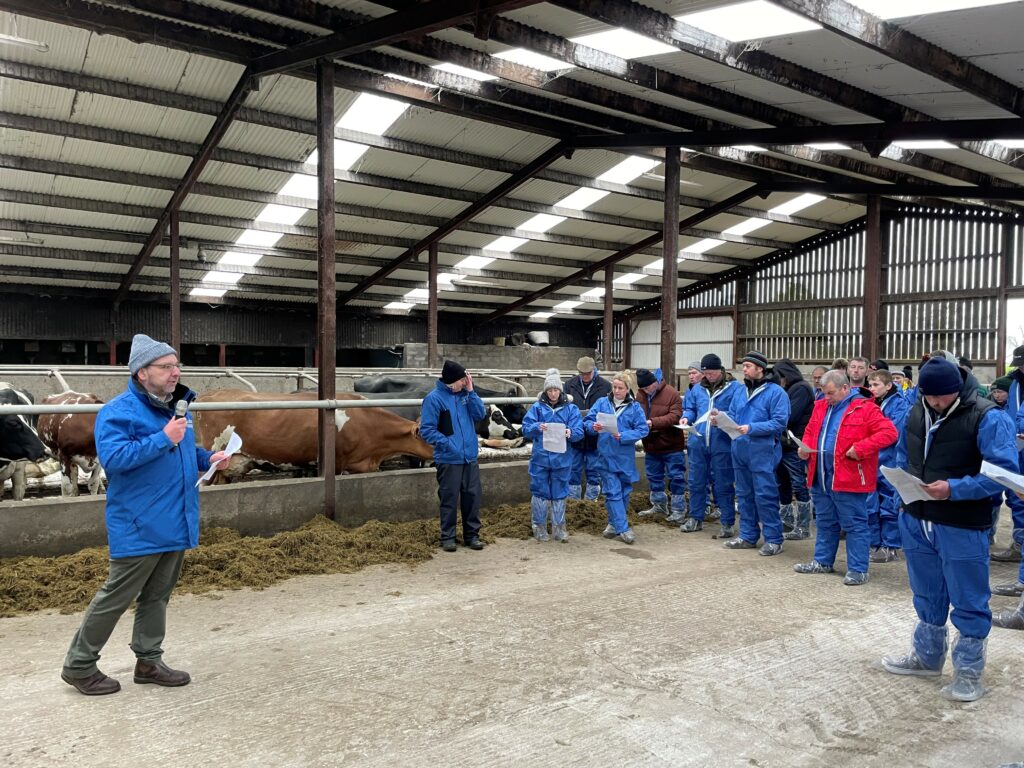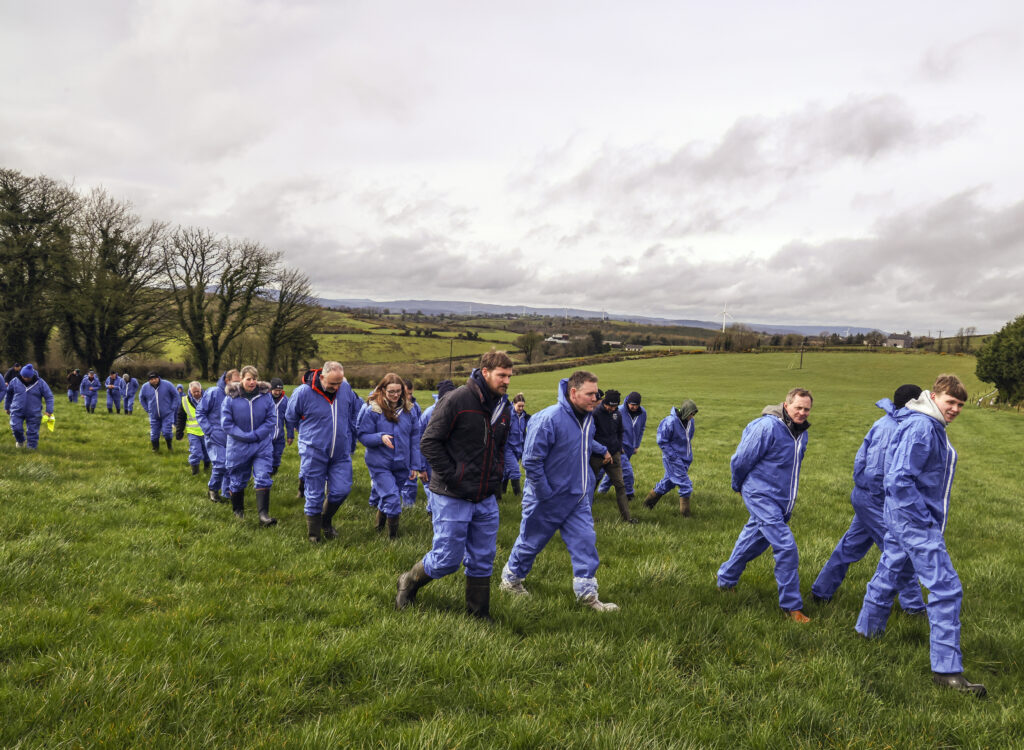Farm walks highlight sustainable and efficient milk production
April 4, 2024
The College of Agriculture, Food and Rural Enterprise (CAFRE) are hosting a series of six farm walks to practically illustrate and define “Efficient and Sustainable Milk Production” for local dairy farmers.
The first two farm walks took place on Wednesday 27th March on the farms of Mark Patterson, Drumcroon Road, Garvagh and James Murphy, Ballyreagh, Tempo.
An additional two farm walks are planned to take place on Tuesday 9th April at A & W McConnell’s farm, 62 Ballymoran Road, Drumgaw, Armagh, and on Thursday 11th April at James McKay’s farm, 53 Levallyreagh Road, Dromara. The farm walks are being held to assist farmers to both understand the issues and highlight key practical measures that can improve environmental and financial performance on farm. All dairy farmers are invited to enrol for the events on the CAFRE website, www.cafre.ac.uk/efficient-and-sustainable-milk-production Further events in counties Antrim and Tyrone are planned for later in April.
During the farm walk at Tempo, James Murphy gave an overview of his family farm and the dairy herd’s physical and financial performance. The farm extends to 79 hectares of which 60 hectares are owned. 110 autumn calving dairy cows plus heifer followers are kept. 70% of cows calve between mid-August and the end of September, with all calved by the end of January. The average milk yield per cow is 7,359 litres from 2.28 tonnes of concentrates. The average butterfat and protein levels are 4.34% and 3.47% respectively. Good quality forage production is key on this farm, with cows grazed and high-quality silage fed. All herd replacements are home-bred using 100% AI and a totally closed herd is maintained. Sexed dairy semen is used on a proportion of the herd with the remainder being served to AI Aberdeen Angus or British Blue bulls. James aims to calve dairy heifers at 2 years of age. To achieve this a high level of management is required.
Lauren Curry, a carbon technologist from CAFRE gave a presentation on ‘Understanding Carbon’. Lauren explained the terms associated with greenhouse gases and the background to carbon benchmarking of farms. Lauren discussed the figures for the Murphy farm, and referred to areas where a farms carbon footprint could be reduced. She was positive in that Fermanagh, dairy farmers can effectively reduce their carbon footprint through attention to efficiency in terms of age of first calving, calving index, longevity of cows, feeding management and balanced use of fertilisers and slurry.
Local CAFRE dairying advisers including Christopher Breen, Trevor Alcorn, Kieran McCartan and Jane Sayers facilitated the large group of dairy farmers who attended the farm walk. One stop involved looking at two batches of heifer replacements and in conjunction with James discussed their management to achieve certain targets. James regularly uses a weigh band to measure heifer growth rates. A ‘sense-hub’ system is used to identify heats and rumination in both cows and heifers. This helps to achieve a compact calving pattern and assists in the achievement of heifers calving at 2 years old. Calving at 2 years old helps to reduce the levels of replacements on the farm and hence reduce greenhouse gas emissions.
The nutrient management on the farm, the importance of soil analysis, liming where necessary and tailoring fertiliser requirements based on crop requirements and the level of slurry applied was addressed. A farm should have a nutrient management plan to achieve this and to avoid any potential issues with nutrient runoff which may affect water quality. Protected urea was discussed, which not only is a more efficient use of nitrogen, also results in lower ammonia losses into the atmosphere which could be detrimental to air quality. The use of clover when reseeding was also discussed as a means of reducing nitrogen inputs and greenhouse gas emissions.
The importance of cow nutrition with high quality forage, both grass and silage, being the key to profitability was emphasized. Cows are fed a base level of concentrates through the 16/32-point parlour, with the remainder being fed to yield through four ‘out of parlour’ feeders. Concentrate type and levels of protein in the concentrates were also discussed with emphasis on reducing concentrate crude protein levels where possible to help reduce emissions without impacting cow performance.
Take home messages were positive, in that if a dairy farmer adheres to good management, strives to improve efficiencies in feeding, breeding and nutrient management then there will be a positive outcome in terms of carbon. The starting point is to measure the farms own carbon footprint through benchmarking which is available through CAFRE or the milk buyer. The dairy industry is at the early stages of addressing this issue, but it is imperative that local farmers gain knowledge of what they can practically do to improve sustainability and help improve their own local environment. As custodians of the countryside and providing food to feed the nation, farmers have faced many challenges in the past and will no doubt meet this new one with good knowledge and support.

